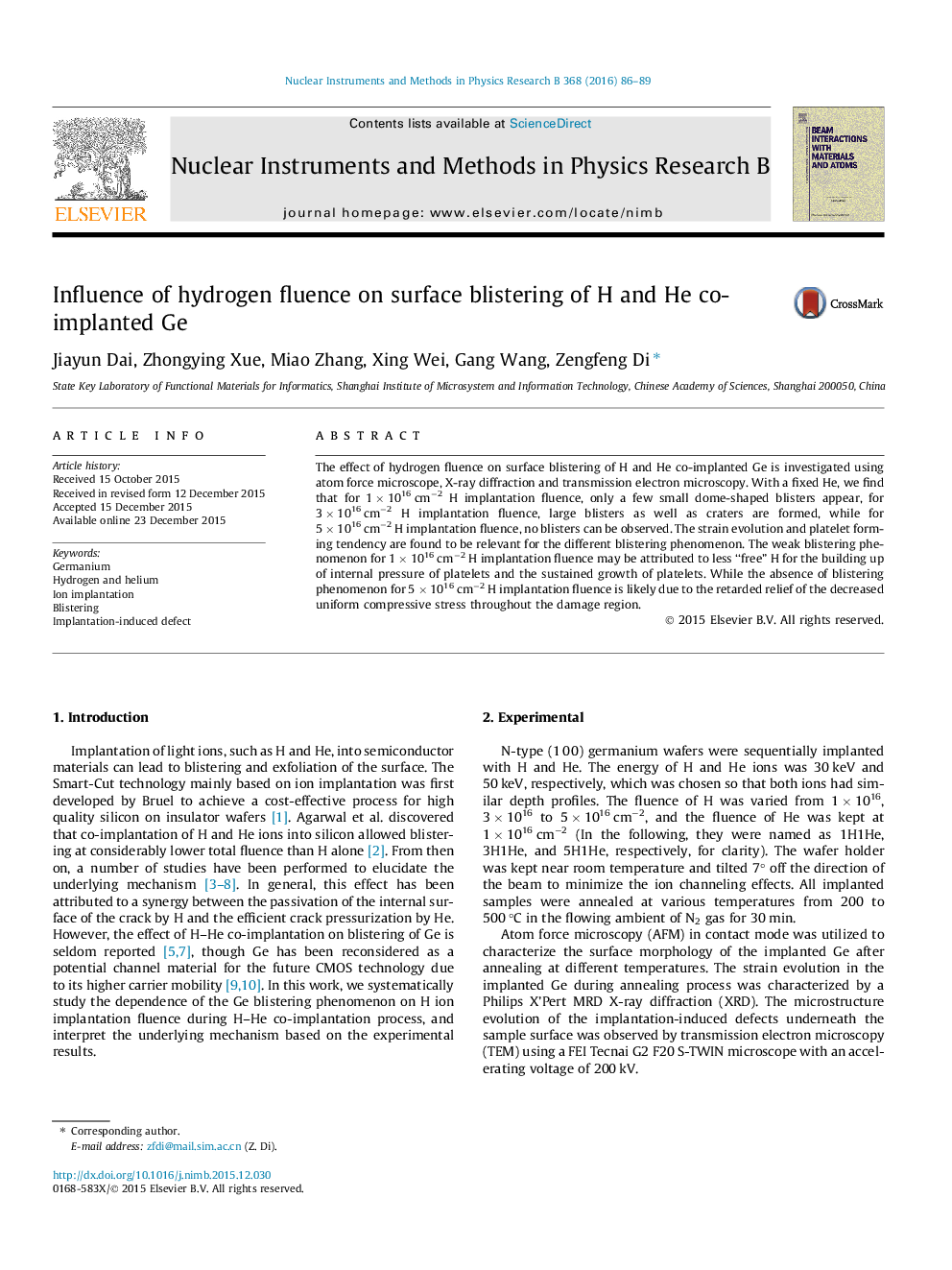| Article ID | Journal | Published Year | Pages | File Type |
|---|---|---|---|---|
| 1681825 | Nuclear Instruments and Methods in Physics Research Section B: Beam Interactions with Materials and Atoms | 2016 | 4 Pages |
•The effect of hydrogen dose on blistering was investigated.•Changes in the blistering phenomena of all the samples were studied.•The evolutions of strain and implantation induced-defects were analyzed.•The platelet forming tendency is responsible for the difference in blistering.
The effect of hydrogen fluence on surface blistering of H and He co-implanted Ge is investigated using atom force microscope, X-ray diffraction and transmission electron microscopy. With a fixed He, we find that for 1 × 1016 cm−2 H implantation fluence, only a few small dome-shaped blisters appear, for 3 × 1016 cm−2 H implantation fluence, large blisters as well as craters are formed, while for 5 × 1016 cm−2 H implantation fluence, no blisters can be observed. The strain evolution and platelet forming tendency are found to be relevant for the different blistering phenomenon. The weak blistering phenomenon for 1 × 1016 cm−2 H implantation fluence may be attributed to less “free” H for the building up of internal pressure of platelets and the sustained growth of platelets. While the absence of blistering phenomenon for 5 × 1016 cm−2 H implantation fluence is likely due to the retarded relief of the decreased uniform compressive stress throughout the damage region.
